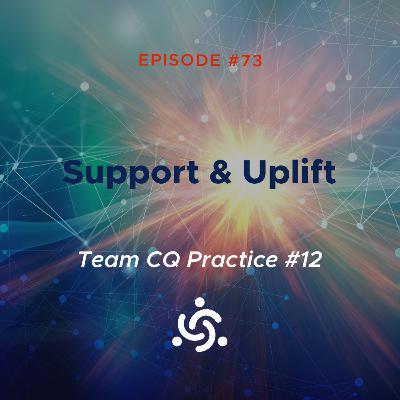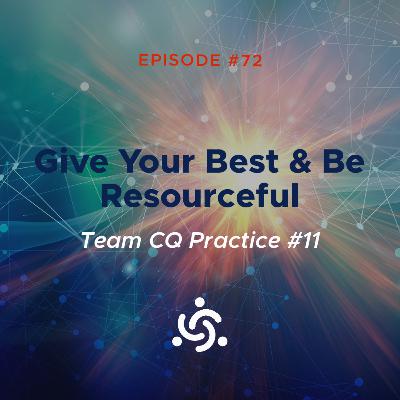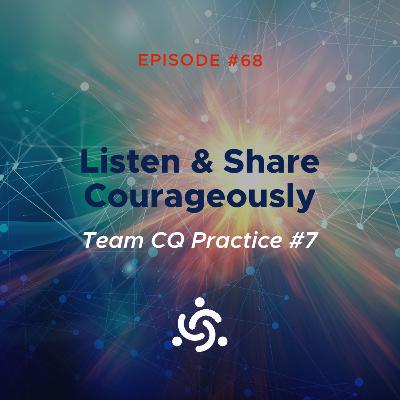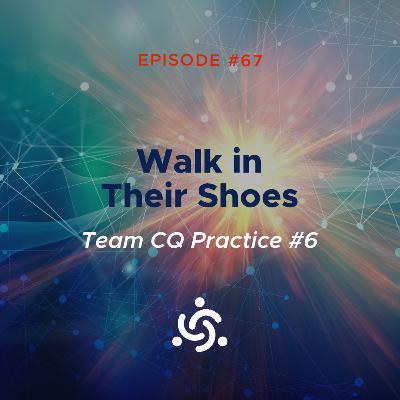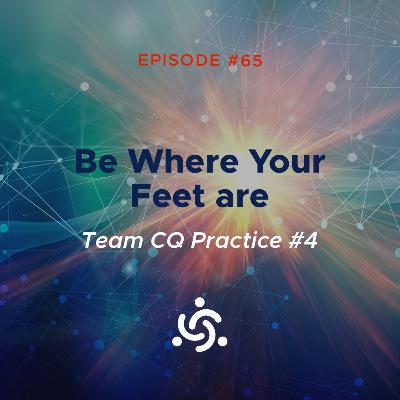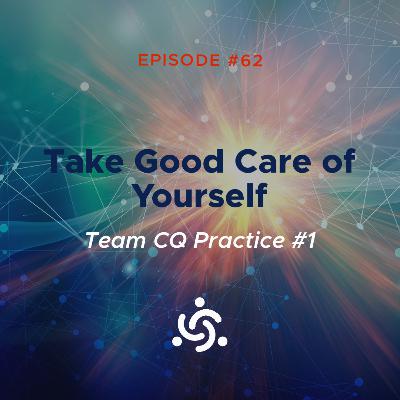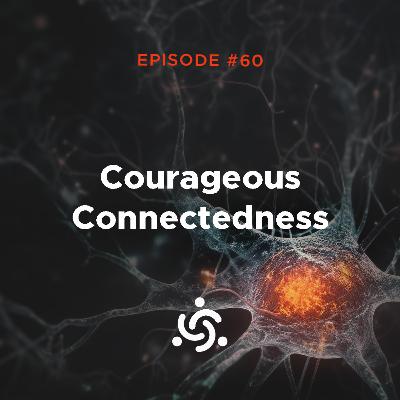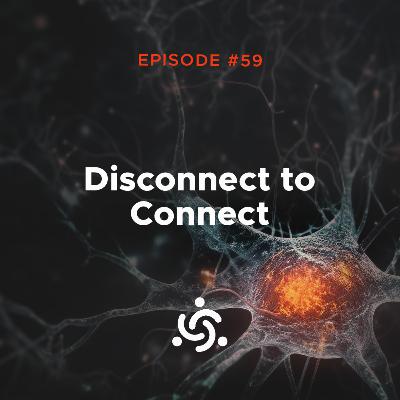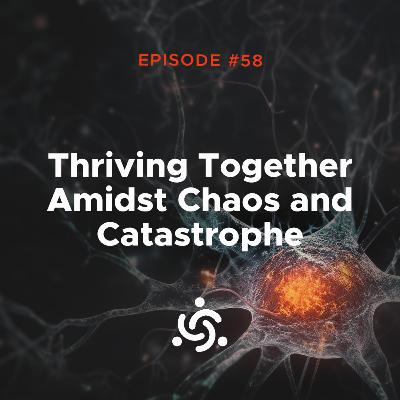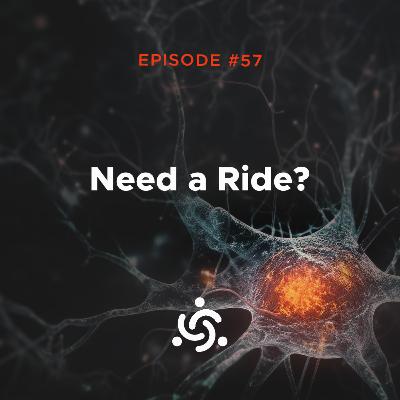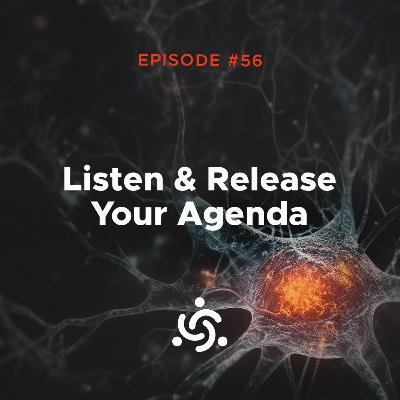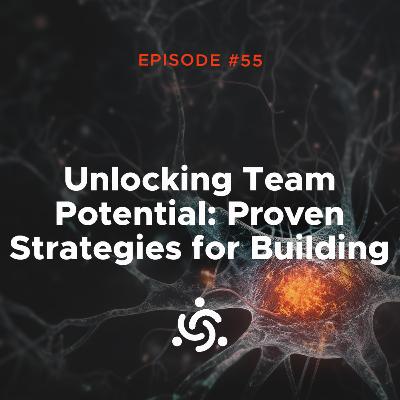Discover Connected Teamwork Podcast
Connected Teamwork Podcast

Connected Teamwork Podcast
Author: Carson Heady, Hylke Faber, Olena Sergeeva
Subscribed: 1Played: 1Subscribe
Share
© Carson Heady, Hylke Faber, Olena Sergeeva
Description
How do I build a high performing team that people want to stay part of?
It’s about courageous connectedness. It goes beyond IQ and EQ. It’s about having team members be deeply connected to themselves, each other and their purpose together. In the Connected Teamwork podcast, we explore with leaders from all kinds of teams how to build deep connectedness by growing through the most challenging team moments.
It’s about courageous connectedness. It goes beyond IQ and EQ. It’s about having team members be deeply connected to themselves, each other and their purpose together. In the Connected Teamwork podcast, we explore with leaders from all kinds of teams how to build deep connectedness by growing through the most challenging team moments.
83 Episodes
Reverse
Support & UpliftAppreciating others is the oxygen for relationship and performance. “I have some feedback for you.” When we hear this, we tend to have some anxiety. That’s why letting people know that we value them, that we have their back, is so important, especially when giving feedback. It reminds people that they are valued and have something to contribute. Even the hardest feedback needs to be given from an atmosphere of appreciation: I see your higher intelligence, potential, purpose and needs, and I want to help you realize more of it. When was the last time you appreciated someone else? Giving appreciation lights up energy in both the give and receiver. As the Buddha said: “If you light a lamp for somebody, it will also brighten your path.”
Team CQ Practice #11Give Your Best & Be ResourcefulWhat do you do when you are overwhelmed? First look at yourself. What is the story you are telling yourself? Is this true? Also ask yourself, what is a rubber ball and what is a glass one? Which todo’s I can play with and which ones are non-negotiables for today? Challenge three foundational myths that block resourcefulness: 1. You are the only one experiencing this. Very unlikely, you are part of a collective of people who each have their own experience of this challenge. 2. You have solve this alone. Also untrue. Ask for help, and at a minimum ask yourself: how would someone I admire approach this? Borrow a piece of their wisdom. 3. You have to solve this now. Very few things are so urgent that we can’t let them breathe a bit. In addition, keep your focus on your sphere of care: what do the people you are called to serve need? Who are they? Maybe it is your family, your boss, your client, your friend. Make a list. Then keep sensing into how to best be of service them. And don’t forget to include yourself on that list.
Reach Out OftenTeam CQ Practice #10Offer and ask for help purposefully. Work together for a shared vision. Follow through. Asking for help requires vulnerability. We need to be able to admit where we need help. And sometimes we ask for help because we want to create team energy toward a shared purpose. We give others an opportunity to be of service when we ask for help. Since asking for help is not something most do easily, it requires practice. It helps to set up an advisory board of people you trust. Let them know you will ask for help and get their permission to do so, so it becomes easier to reach out when you are in a pinch. And offer help. Ask: how are you? What do you need? Reaching out reduces stress and increases team performance.
Connected Teamwork Work Practice #9:Create & Maintain Balcony Perspective Connect before sharing context and content. Keep your eyes on a clear, higher goal. In the grip of thesurvival brain, it can be easy to lose sight of the bigger picture of theconversation. Enter the need to go on the balcony. Take a deep breath and askyourself and possibly the other person a balcony question, for example: can yousay more about that? What is most important to you about this? What would youlike to see happen? Be willing to be vulnerable and say: I need to think aboutthis for a moment. Situations in the office are rarely life and death. If youdon't think you have time to take a breath and look at the bigger perspective,it's probably your survival brain talking to you. WATCH: Walk above the clouds,humbly.
Make Amends Promptly: Own your action, recognize impact, offer reparation. Do it for integrity.“I am sorry” is a little sentence that can make a big difference. We hesitate to say it because our ego wants us to be perfect and doesn’t want to give other people reasons to judge and dislike us. Making a quality amend is an act of truth. We do it because deep down we know we harmed ourselves and/or others and we feel called to restore balance. Beware of hiding behind “I am sorry.” These can’t just be words. A true amend includes a real change in behavior and, in many cases, offering some kind of reparation to the other person. Remember that the person you probably first need to make amends to is yourself. Offer reparations to yourself by being kind and compassionate.
Listen deeply. Create Dialogue. Conflict is confluence. Deep listening is an act of leadership and it magnetizes both the listener and the speaker. We learn to listen deeply to what is underneath our surface thinking and feeling and access a deeper truth together when joined together in a space of listening. Listening is also an act of courage. It requires us to not react, force solutions and be the hero. It requires us to be humble and stay open even when the other person is presenting us with an opinion that is very different from ours. We tend to reach our point of “I can’ listen any more.” Staying open then helps to connect at a deeper level. We all want to be heard. What would happen if you became a really great listener for someone who needs it today?
Walk in Their ShoesEveryone you meet is facing a hard battle somewhere. In conflict? Reflect on the other person with empathy on what may be happening for them. What are their fears? Their anxieties? When you can sit together in the storm, you will walk in the sunlight. Have the courage to open up to the other person, even if it feels uncomfortable. Don’t fall into the trap of judgment. Instead of giving into condemnation, have a conversation. The extent of your judgement is paradoxically also a measure of how much you care. You wouldn’t have any opinion about the other person if you didn’t care about them and the issue you are facing together. Let go of the judgment. Be curious about what they are really about and how you can be of service.
Team CQ Practice #5: Be HumbleJudgment is part of being human. Yet it is the number one obstacle to relationships and teamwork. Humility is the core antidote. Do we know for sure what we are thinking and believing about the other person? Who would we be without this judgment? We become curious about the other and realize that they are so much more than their opinions and our judgments about them. In judgment, we confuse our thinking about the person with who they actually are. Have the courage to sit with a person you have judgment about. Let go of the need to relieve them of what you may believe to be the misery of their opinion. Let go of the need to fix the relationship by having them see it your way. Instead sit with them, hear what they are saying and what they need. Commit to sitting with them, also when you have strongly different views. Your relationship is much bigger than your thoughts about the other person.
Be Where Your Feet areTeam Connectedness Practice #4: Be Present and Authentic. Stay in the moment. Shareyour truth honestly, respectfully and purposefully. We create fertile groundfor real connectedness, by choosing to be present, no matter what. Being inthis moment may feel like we are shrinking our bubble. The noise dissipates,even if it’s still noisy around us. The truth of the moment comes into view.Authenticity is natural outflow from presence. On a scale from 1-10, howpresent are you now? Do you dare to be with everything and everyone now?Authenticity includes listening to others and expressing with equal strength.Presence may not be our habit. Is it worth the effort to become more present,even if your mind wants to distract you? You decide.
Pause. Let Go & Welcome Deeper Wisdom.
Team CQ Practice #3
Release attachment and control. Allow intuition & flow. Wisdom is what we receive. We receive it when we get out of the way by letting go of our attachments. We may notice we have three kinds of should-attachments: I ( what I should be and do), We (what you should be and do), and It (what should be happening). These attachments chew up a lot of energy. They distract us from our deeper wisdom and keep us stuck in circular thinking that doesn’t allow us to see the bigger picture. Wisdom comes online when we anchor in our intentions: how will you be no matter what happens? Intentions include being authentic, vulnerable, respectful, of service, helpful to others and adaptive. What is your intention? When challenged, we pause, let go of our attachment, anchor in our intention and let a deeper answer, a higher intelligence response emerge.
Team CQ Practice #2
Always Grow
How do
we work with challenges in a way that brings peace to our hearts and pride in our action? We first get right with ourselves. What are our values? How can we
live and lead more from these? What habits may we need to let go of to help us
focus on what is mission-critical? Don’t get lost in worrying about the 99%
that is outside of your control. Focus on the proverbial 1% that is and lead
from there. To really learn, we need to take a step back from the situation and
let the learnings in. This requires humility. The Cherokees say: Listen to the
whispers so you don’t have to hear the screams. What are you hearing listening
deeply about what this challenge is teaching you?
Take Good Care of Yourself
If we don’t take care of ourselves, who will? Bringing ourselves into balance helps us to be of service to others. Not taking care of ourselves, we burn out, create relationship imbalances and are less able to focus on what is truly needed and do that. How do we take care of ourselves? It starts with becoming aware that selfcare is important. Self-acceptance is the foundation of selfcare. On a scale from 1-10 how much do you accept yourself? What becomes possible when you get closer to a 10? Maybe you notice more inner ease and harmony, possibly more energy. Feeling challenged to find time for self care? Start small. Maybe you let go of some judgmental thinking. Or you take a walk in the middle of your day. Spend some time doing exercise. The more you take care of yourself, the more you will realize the benefits and will be motivated to do more of it.
I Have Your Back
“Being a leader means taking responsibility for the impact you have on other people,” says Sam Murley, General Manager at Microsoft. We need to make it safe for people to speak up. Leaders role model openness by going themselves first. This takes courage. Leaders need to be open enough to acknowledge their growth opportunities and give themselves and each other grace at the same time. People need to know we have their back. We build this deep level of trust by first getting to know each other. This creates a safe container to have also the more difficult conversations with grace, which ultimately creates intense team cohesion and connectedness.
How do I build a high performing team that people want to stay part of?
It’s about courageous connectedness. It goes beyond IQ and EQ. It’s about having team members be deeply connected to themselves, each other and their purpose together. In the Connected Teamwork podcast, we explore with leaders from all kinds of teams how to build deep connectedness by growing through the most challenging team moments.
Join Microsoft Sales Leader and best-selling author Carson V. Heady, Growth Leaders Network (GLN) Coach and Founder, and award-winning author Hylke Faber, as they explore together with their guest what helps people truly thrive together.
Feeling your inner Vitamin D is low? “Take a pause,” says Dianna Bergman, Chief of Staff and Head of Portfolio, “however you do it. I go Rebound: jump on the trampoline for a little bit between meetings.” Taking a pause helps us focus on the bigger why and creates the inner space to listen deeply to others. We need to really understand where people come from, what drives them, how they are feeling. Only in that way can we truly collaborate toward a shared purpose. We build connectedness by first connecting to ourselves and then sharing our inner Vitamin D with others, through being purposeful and deeply listening. Get to an impasse? Ask them: what would you suggest as a next step to move forward? We build connectedness and impact one small step at a time.
By prioritizing meaningful relationships, leveraging technology, engaging with communities, practicing self-care, and embracing empathy, we can maintain our connections and thrive even amidst chaos and uncertainty.How do you stay truly connected and resilient in a world filled with chaos and uncertainty?In today's world, conflict and uncertainty seem to be constants—wars, famine, political strife, and natural disasters are just a few of the challenges we face.Amidst this chaos, our connections become lifelines. It's crucial to prioritize relationships, not just for our personal well-being but also for our resilience and effectiveness as teams.Humans are hardwired to crave social connection. When faced with bad news or feeling separated due to polarized views, our need for connectedness becomes even more pronounced.
“We didn’t bring a gun on the Appalachian Trail, only bear spray,” shared Susan Otten, Chief Executive Officer at Indiedogood about her 2,194.3miles in 154 days hike to raise $94,000+ for Parkinson's research. Susan has held leadership positions at major companies, including Apple and shares three principles that help her succeed: tools, training and team. “I couldn’t have done this hike without my daughter and all the people who supported us on the trail.” They literally appeared out of the woodwork. Bleeding head wound? Two hikers appeared, one of which had the same happen a week prior. They provided the bandaging Susan needed. Unsure where the nearest emergency room is? A car appears: “You gals, need a ride?” Susan inspires entrepreneurs she supports with her high trust mindset. Do you need help? Please don’t sit on the problem by yourself for too long. Give us a call. We are here to help. https://www.youtube.com/@appalachiantrailforparkins1185
“To build great teams, we need to empower people,” shares Evren Ozkaya, Founder & CEO of SCW.AI and Supply Chain Wizard. People need to become owners of the company and vision for the company, then they can lead. Then they make decisions that reflect the whole and are not about just optimizing their sub-systems. “Don’t make anyone wrong,” says Evren. Everyone has a positive intention and is trying to achieve their goals in the best way they know how. Listen to how they feel, what they need, what their aspirations are and work with them to realize those in the context of the vision for the company. Help people release their personal agenda and be successful as part of the whole.
On the latest Connected Teamwork Podcast featuring co-hosts Hylke Faber of Growth Leaders Network and Salesman on Fire author Carson V. Heady of Microsoft, we welcomed Shashi Bhushan, Regional VP of YASH Technologies and 20+ year consultant and leader, to share his insights on creating and nurturing a connected team.
The ability to foster a deeply connected and empowered team is more crucial than ever.
Here are proven strategies for building connectedness within teams, including practical advice on clear communication, trust and empowerment, cultural sensitivity, and effective conflict resolution.
By embracing these principles, leaders can create an environment where every team member feels seen, heard, and valued, ultimately driving unprecedented levels of engagement and success.
E48Guest: Sheevaun ThatcherVP of Strategic Enablement at Salesforce
WATCH
RECORDING
On the latest episode of Connected Teamwork, Sheevaun Thatcher, CPC, VP of Strategic Enablement at Salesforce, and "jungle gym manager" with a diverse sales and leadership career, joins Microsoft's Salesman on Fire Carson V. Heady to dive into the nuances of leadership styles, culture and adaptation.
The essence of teamwork has taken on new dimensions, revealing its transformative potential in shaping organizational success. As a leader who has traversed through various landscapes of leadership, Sheevaun has come to appreciate the profound impact of connected teamwork on driving innovation, fostering growth, and navigating through challenges.


